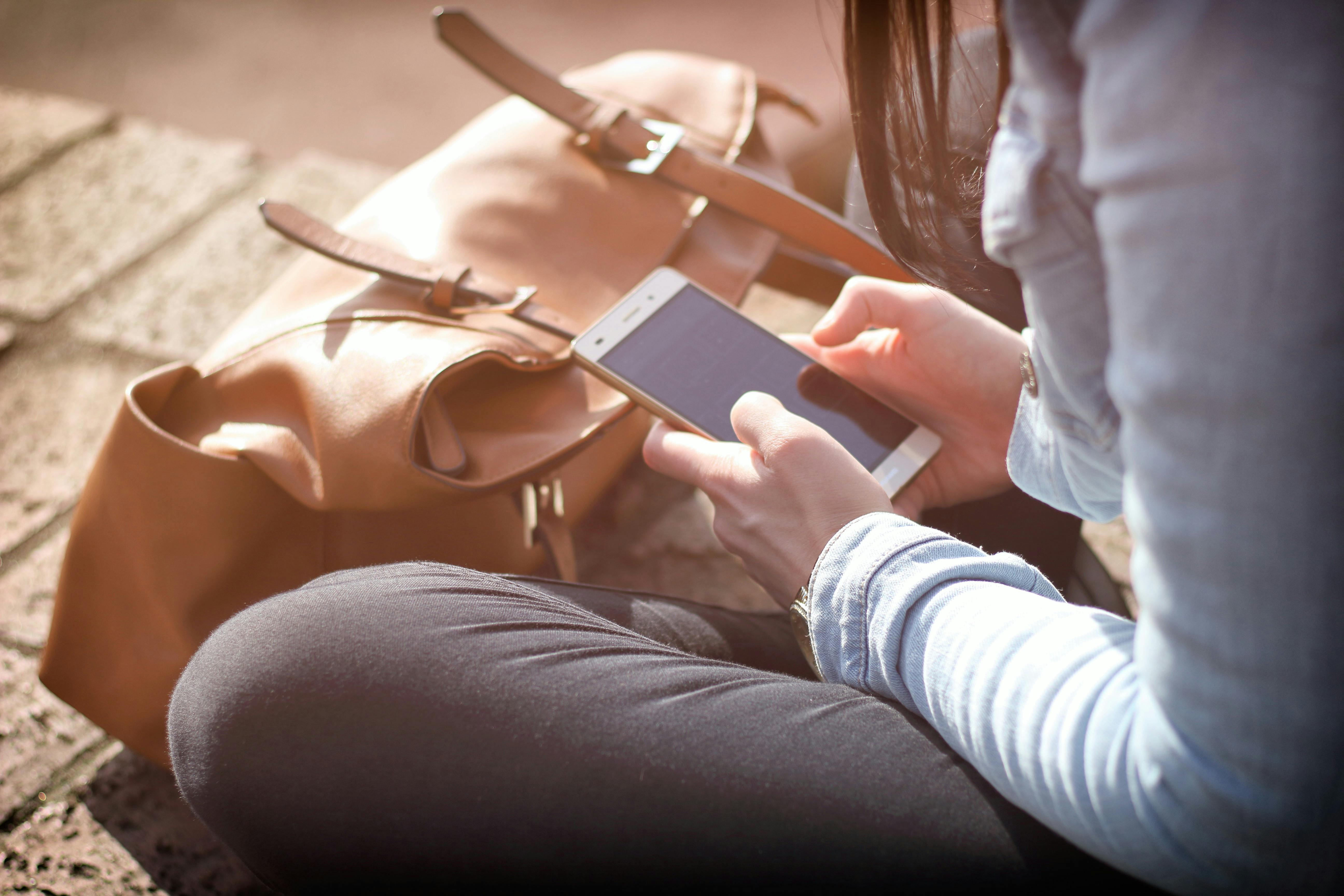There are close to 5 billion smartphone users worldwide (Statista, 2024). The average person spends 4 hours a day on their phone (Statista, 2023), and almost half of all smartphone users describe themselves as having a smartphone addiction (Ratan et al., 2022). Unsurprisingly, almost all university students have a smartphone (Huey & Giguere, 2023). In people aged 25 and under, 25% of them meet the criteria for problematic smartphone usage (Sohn et al., 2019).
You’d be hard pressed to find anyone that has never spent too much time on their phone. 71% of people spend more time on their phones than with their romantic partner (SellCell, 2021). As developers get better and better at gaining and keeping our attention, smartphone addiction has become a modern epidemic.

What does smartphone addiction look like?
Some symptoms of smartphone addiction are:
- Knowingly or unknowingly spending too much time on a phone; lying to others or yourself about your screen-time
- Missing out on life events or opportunities because of your phone
- Your sleep is affected by phone use
- Using your phone as a means to escape (Addiction Center, n.d.; Parasuraman et al., 2017).
Time spent on your phone is an imperfect measure as to whether you are addicted. You can be addicted if you spend 2 hours on your phone a day or 24 (Panova & Carbonell, 2018). What’s most important is the effect it has on your life and mental wellbeing.
What are the different types of addiction?
Researchers have narrowed down 5 categories for smartphone addiction (Brand et al., 2016; Mehmood et al., 2021):
- Virtual Relationships: Some people become obsessed with online relationships developed through social media platforms. Their obsession with their online persona leads to the neglect of real-world connections. A negative by-product of the ability to recreate yourself is “catfishing” (using someone else’s image and information to create a fake profile), which makes-up 1 out of every 7 online profiles (Sharma, 2023).
- Information Overload: the amount of knowledge and information online is incredible, and it’s easy to feel like you’re missing or not up to date on current events. This can result in constant, sometimes mindless, scrolling. (Arnold et al., 2023; Gupta & Sharma, 2021; Brand et al., 2016)
- Gaming Addiction: League of Legends, RPGs, and Mobile games take advantage of unpredictable reinforcement and reward schedules, it’s hard to predict when you will level up or beat the “boss” so you keep playing (James et al., 2016). Similar reinforcement schedules occur in slots, which use algorithms similar to slot machines in casinos - the most addictive type of game interface (Dixon et al., 2011; MacLin et al., 2007). People play online games for a variety of reasons, but the most dangerous form is gambling. Sara Ahmed, a researcher in the University of Waterloo’s Gambling Lab explored how social media platforms are used as a way to escape (Ahmed & Dixon, 2023). Here the scroll features present endless new content tailored to your interests, reliably capturing your attention, and increasing the time you spend scrolling (Ahmed & Dixon, 2023).
- Net Compulsions: shopping addictions, gambling, or trading are all examples of this. Winning or acquiring new items creates a dopamine release which, combined with the ease of doing everything in the palm of your hand, makes it difficult to disengage even when facing horrible financial loss (Li et al., 2022; Gainsbury, 2015).
- Cybersex Addiction: this involves use of online pornography, adult websites, or sexual fantasy chatrooms (Young, 2008). This can come from a place of dissatisfaction with one’s intimate relationships or the ability to remain anonymous while exploring one’s fantasies (Snagowski & Brand, 2015). The addictive aspect lies in the constant search for new and more stimulating content, which can result in a cycle that is hard to break (Weinstein et al., 2015). The constant influx of these type of media can damage one’s body image, harm relationships, and shatter normal expectations of sexual behaviour (Weinstein et al., 2015).
Some of the current research findings
Research has shown physiological differences in people struggling with smartphone addiction; differences that are normally found in individuals with substance use disorders (Seo et al., 2020; Haynes, 2018). Although not as intense as say a hit of cocaine, the underlying reward mechanisms that trigger your dopamine pathways are similar (Sharma et al., 2020).
Unlike drugs or alcohol, smartphones are readily available and can be accessed at any time, and anywhere. This ease of access is one reason that makes this addiction so pervasive (Ahmed & Dixon, 2023), altering brain chemistry and causing horrible withdrawal symptoms when users abstain (Hartogsohn & Vudka, 2023).
One study explored the effects of abstaining from Instagram for one week. Researchers found that women who abstained from Instagram had a significant increase in life satisfaction, and those who tended to make social appearance comparisons saw an increase in positive affect (Fioravanti et al., 2020).
While there is still much to learn about smartphone addictions, researchers have isolated a number of problems that are caused, and even reinforced, by it.
- Poorer Grades: studies have shown that having a smartphone addiction negatively influences your GPA (Sunday et al., 2021).
- Poorer Sleep: many people addicted to their phones sleep less and more irregularly than their peers, there are some extreme cases of individuals being awake for over 48 hours due to phone misuse. University aged students should be getting 7-9 hours of sleep a night (Hershner & Chervin, 2014). But, over half of students sleep less than that (Estevan et al., 2021). Come exam time, we see those rates fall even further. Poor quality sleep can lead to weight gain, shorter lifespan, and increased rates of depression (Hershner & Chervin, 2014).
- Depression & Anxiety: phones can help individuals escape stress in the short-term. However, excessive phone use ultimately exacerbates depression and anxiety (Shoukat, 2019).

*For those interested, CBT is available for free to students through Counselling Services, and to employees through the Employee Assistance Program and through the Homeweb.ca online CBT course. Both studentsand employee extended benefit plans also cover some counselling. BounceBack Ontario offers free online support for individuals 15+.
Do you have an idea or article you'd like to share? We'd like to hear from you. Forward your inquiry to the Community Well-being Team.
Common Treatment Approaches
One possible intervention is Cognitive Behavioural Therapy (CBT*), which is largely considered the first line of psychological treatment (Stevens et al., 2019). One study found significant improvement in self-esteem and phone addiction after CBT (Farjantoky et al., 2020). For gaming addiction, a study noted that CBT provided only short-term benefits and needed to be coupled with other therapies like music therapies to see improvements (Bong et al., 2021).
However, CBT is not for everyone. Luckily there are alternatives. Online support groups like ITAA (Internet Technology Addicts Anonymous) follow the same 12 step program as Alcoholics Anonymous (AA) groups, and have been show to be highly effective for many individuals (Erikson, 2020).
Another approach include setting your phone to grayscale mode to reduce the allure of applications on your phone Turning off push notifications has also been effective in reducing phone use (Kim et al., 2016).
